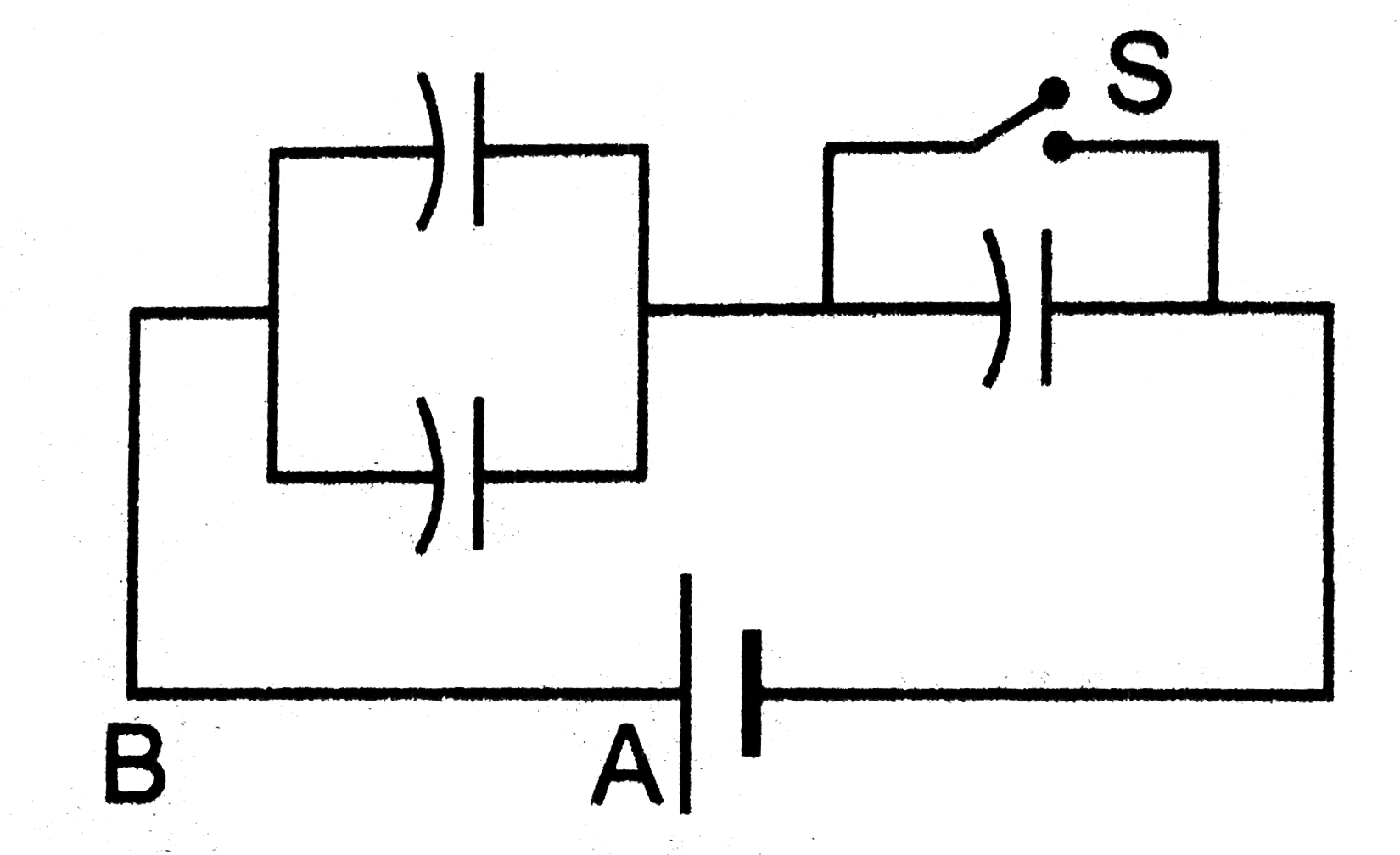The particle P shown has amass of 10mg and a charge of−0.01μC.Each plate has a surface area

Electerical force is blanced by the weight of the mass
mg=qEE=e≤crtricfield
or mg=q.V.Ceplision0A
(:. Eplision_0 A / d = C :. 1 / d = C / eplision_0 A)<br>V=mgeplision0Aq.C
=10−6×9.8×8.88×10−12×100×10−410×10−8×0.04×10−6
V=43mV.
Topper's Solved these Questions
Similar Questions
The particle P shown in the figure has a mass of 10 mg and a charge of −0.01μC. Each plate has a surface area 10−2m2 on one side. What potential difference V should be applied to the combination to hold the particle P in equilibrium?

View SolutionThe particle P shown in the figure has a mass m and a charge -q. Each horizontal plate has a surface area A potential difference V=n(mgε0A2qc) should be applied to the combination to hold the particle p in equilibrium then find the value of n.

View Solution
Knowledge Check
The particle P shown in the figure has a mass of 10 mg and a charge of −0.01μC. Each plate has a surface area 10−2m2 on one side. What potential difference V should be applied to the combination to hold the particle P in equilibrium?
 A43mVB35mVC50mVD55mV
A43mVB35mVC50mVD55mVParticle having a mass of 1.0 mg has a velocity of 3600 km/h. Calculate the wavelength of the particle.
A6.626×10−31mB6.626×10−30mC6.626×10−29mD6.626×10−28mA copper plate has a length of 0.1 m and a width of 0.12 m at 25∘C . The plate is uniformly heated to 175∘C. If the liner expansion coefficient for copper is 1.7×10−5/∘C what is the change in the area of the plate as a result of the increase in temperature ?
A2.6×10−5m2B6.1×10−5m2C3.2×10−6m2D4.9×10−7m2
The particle P shown in the figure has a mass m and a charge -q. Each horizontal plate has a surface area A potential difference V=n(mgε0A2qc) should be applied to the combination to hold the particle p in equilibrium then find the value of n.

View SolutionA metal cube of length 0.1 is charged by 12μC. Calculate its surface charge density.
View SolutionParticle having a mass of 1.0 mg has a velocity of 3600 km/h. Calculate the wavelength of the particle.
View SolutionA parallel plate capacitors of plate area A has a total surface charge density +σ on one plate and a total surface charge density −σ on the other plate. The force one plate due to the other plate is given by :
View SolutionA parallel plate capacitors of plate area A has a total surface charge density +σ on one plate and a total surface charge density −σ on the other plate. The force one plate due to the other plate is given by :
View Solution
